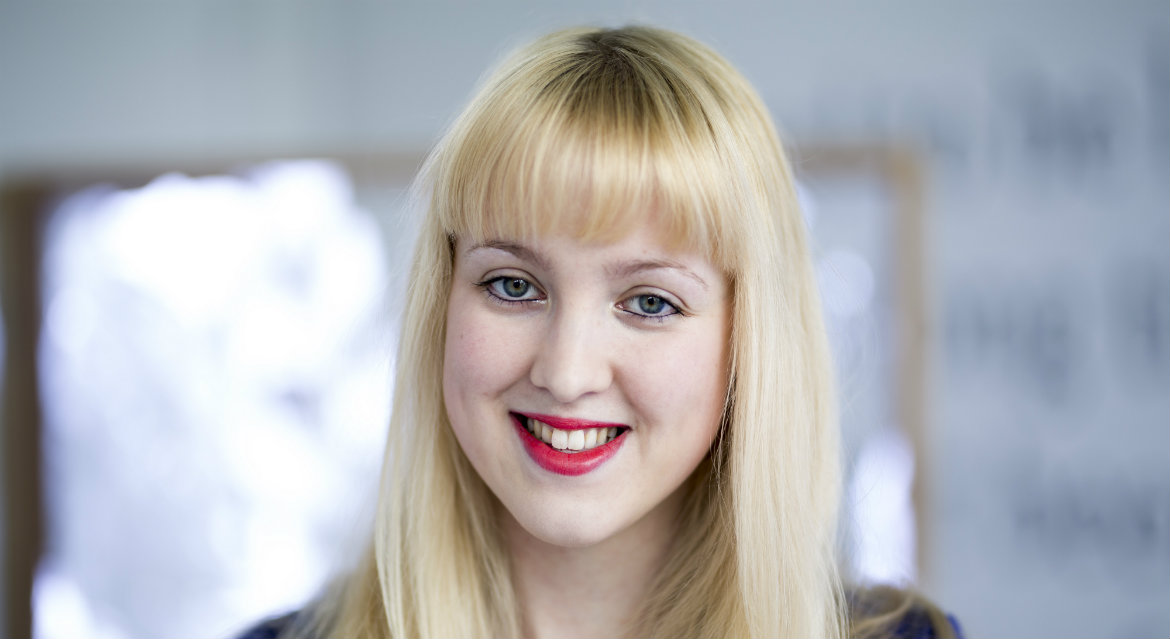From operating table to Degree Show in six painful weeks
Published On Mon 15 May 2017 by Grant Hill

The annual Degree Show is always a special time for art and design students, the culmination of several years of hard work and the opportunity to showcase the fruits of their creative labours to an audience of thousands.
For Amy Crawford, this year’s University of Dundee Art, Design and Architecture Degree Show takes on special significance as it comes just six weeks after she nearly died of sepsis.
After several days’ illness, Amy was in such severe pain that she was unable to stand by the time she arrived at the out-of-hours doctor service in Dundee at the start of April. The 22-year-old from Carnoustie had a pulse rate of 146 and a temperature of 39.9 degrees and was immediately diagnosed with suspected sepsis. After she was rushed to Ninewells Hospital, surgeons performed a life-saving operation to remove a large septic abscess before it ruptured.
Sepsis can lead to multiple organ failure and is the primary cause of death from infection. Despite her ordeal, Amy says her thoughts turned to her work and the possibility of missing her Degree Show as she lay in her hospital bed.
“I was in so much pain when I got to hospital that I couldn’t think of anything else,” she said. “Even the ambulance staff were panicking when my pulse rate increased to 146 beats per minute so I knew how serious it was. It was as I was lying waiting for my operation that I had a brief moment when I started thinking that I wouldn’t get to my Degree Show and I would have wasted all that time and effort.
“I would have been devastated to have missed out. This is what everything builds towards for art students and even after the operation I was worrying about what needed to be done. All my tutors and other staff here were fantastic though. They kept emailing me to let me know what stage everything was at and put my mind at rest as much as they could.”
The last few months of their undergraduate years are the busiest for students as they work days, nights and weekends to pull the strands of their final-year project together, hand in their dissertation and put the finishing touches to their Degree Show exhibits. As such, Amy’s illness came at the worst possible time.
“April was pretty much a write-off for me,” She explained. “I was bed-bound for weeks so when I eventually was able to get up my muscles had wasted. I was so weak but I knew I had to get into University to finish my work. I started off coming in a couple of days a week and built up from there. I probably shouldn’t have come in as much as I did but I had put so much into this that I was determined that sepsis wasn’t going to ruin it for me.
“We had already handed in our dissertations and, luckily, I am quite an organised person so everything that needed to be done related to the actual assembly and installation. If I had one piece of advice for art students it is to be as organised as possible because you never know what’s round the corner.
“It was frustrating for me to be sitting at home recovering knowing how much needed to be done but, once again, people couldn’t have been more supportive when I came back in. I had a great third-year student helping me out. I have been looking forward to this day for four years and I guess everything that’s happened will make it even better.”
Amy’s exhibit is inspired by her experiences running art workshops for adults with dementia, aiming to challenge common perceptions of sufferers and aspiring to inject humanity into the issue by seeing past the disease itself.
Quotes from the dementia sufferers Amy worked with talking about the condition appear on the wall of her exhibition space. She has also produced laser-etchings on glass screens inspired by Dr Aloysius Alzheimer’s initial illustrations of dementia but Amy used pressed flowers from the University’s Herbarium Collection to depict the impact of the disease on the brain.
“I drew parallels between these collections and the disease as both are trapped in a moment in time,” she said. “They are altered yet still beautiful. That was something I wanted to get across. It can be harrowing to work alongside people with dementia but it is also very rewarding to see how art can help to bring out glimpses of their old self. One lady couldn’t sit still when she first came to classes, now she can sit and paint for hours.”
Amy, who studied Fine Art at the University’s Duncan of Jordanstone College of Art & Design, is one of almost 350 students exhibiting at this year’s Degree Show.
The exhibition opens with the traditional Preview Evening for the students, their families and invited guests on Friday, 19th May and will open to the public the following day.
Admission is free and the show if open from 10am until 8pm (Monday – Friday) and 10am to 4pm (Saturday – Sunday) until Sunday, 28th May.
More information is available at http://www.dundee.ac.uk/djcad/degreeshow/.
For media enquiries contact:
Grant Hill
Press Officer
University of Dundee
Nethergate, Dundee, DD1 4HN
Tel: +44 (0)1382 384768
Mobile: 07854 953277
Email: g.hill@dundee.ac.uk